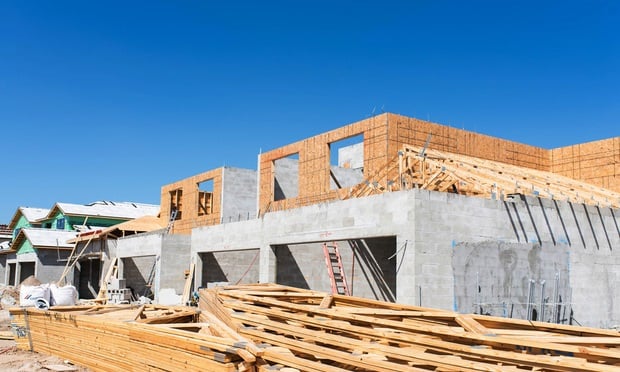NEW YORK CITY-There may have been a time where Manhattan was the epicenter of retail growth, but now, activity in the outer boroughs is catching up—and, in fact, soaring to its own new heights. That was the message of the “Building the Boroughs” panel discussion at the ICSC conference Monday, sponsored by the organization's Women's Special Industry Group.
Brooklyn, Queens, the Bronx and Staten Island were all represented by developers and officials from those areas, while Manhattan was covered by panel organizer and moderator Faith Hope Consolo, chairman, retail group, Douglas Elliman Real Estate.
Brooklyn, of course, is buzzing. “Companies want to move businesses there because the talent is in Brooklyn, with people at Google and the like living there,” said Caroline Pardo, director of leasing, Jamestown Properties. “A lot of companies looking to open their first offices in New York City aren't necessarily going to Manhattan, so they're looking for availability in Brooklyn.”
Charged with marketing Industry City—a six-million-square-foot complex of 16 industrial properties located on the Sunset Park waterfront in Brooklyn—Pardo spoke of introducing a new type of retailer. “We've allocated 50% of space for the 'maker's movement,' she said, referring to artisans of all types of products. Jamestown also is looking to make the complex into more than a shopping destination.
“We're looking at adding movie theaters, maybe a rock climbing wall or maybe an ice skating space,” Pardo said. “We want to get people to come in all day and make it an experience.”
Forest City Ratner Cos. has realized success with the Barclays Center; the arena has nearly a dozen subway lines that come into its facility, noted Melissa Burch, EVP, commercial and residential development. The company is working toward creating affordable housing in its Atlantic Yards project.
And parts of Brooklyn have yet to rise, but their day is coming, said Richard Bearak, director of land use at the office of the borough president's office. “Greenpoint will be the next frontier with the next wave of high-rise buildings. Coney Island been zoned for high-rises and that's coming, Gowanus and Bushwick are coming too.”
For its part, the Bronx is working not to emulate any borough but instead to solidify its unique identity, according to Marlene Cintron, president, the Bronx Overall Economic Development Corp.
“The Bronx is not the next Brooklyn, the Bronx is the Bronx,” she declared. “We have the number one JCPenney in the nation, the number three Target and BJ's Wholesale Club, so both are building a second store in the borough. All is well in the Bronx.”
Cintron invited developers to come in, and noted that the Bronx is “the only borough that still has land.” Many projects are in the works there, including a 30,000-square-foot strip mall and several other shopping complexes.
As the only borough without a full-service hotel, there is room for growth, she acknowledged. And hoteliers may be leaving money on the table. “The major brands have told us they don't see the business, but a boutique property opened last year and I called to say I wanted to come in with the borough president, the owner told me he couldn't allow that because he didn't have any vacant rooms to show.”
Meanwhile, there also have been shifts in Queens. “The image of Queens is changing, there used to be different ethnic groups in different neighborhoods but now it's a blend,” said Seth Bornstein, executive director, Queens Economic Development Corp. “Queens was seen as a stepping stone to Long Island but now people can have a house, the schools are getting better, and the amenities—such as the Queens Museum and Citi Field—are good."
Among the area's emerging spots is Long Island City. “Over in Court Square, we're looking for local and artisanal businesses,” said Patricia Dunphy, SVP, Rockrose Development Corp., which has a new mixed-used development in the area. “M. Wells steakhouse lost its lease and I talked the restaurant into coming to us. We're trying to make [our development] a place with restaurants and bars, and we're looking for basic necessities, like a hardware store.”
Long Island City is still a value play compared to Manhattan, Dunphy noted. “Renting a three-bedroom apartment in Manhattan costs $5,500 to $6,500, but it's $4000 in Long Island City. For three young people, that's great. And studios in our new building start at $1,700.”
And other parts of Queens soon will flourish, noted Borenstein. “Hunter's Point, Rockaway and downtown Flushing will come back. The pricing is still right.”
Last but no longer least, Staten Island is making tremendous inroads on the retail front, thanks to the New York Wheel and Empire Outlets project. The complex will have a large audience, said the developer Donald Capoccia, managing principal, BFC Partners.
“Two million tourists take the Staten Island Ferry every year, along with one million residents; it's the third most visited attraction in the city,” he reported. “The North Shore of Staten Island is an unbelievable opportunity. It's New York's last development frontier.”
© Touchpoint Markets, All Rights Reserved. Request academic re-use from www.copyright.com. All other uses, submit a request to [email protected]. For more inforrmation visit Asset & Logo Licensing.







